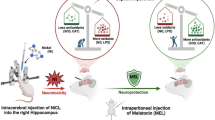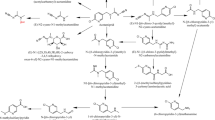Abstract
Background
Organophosphorus agents are potent neurotoxins that widely used as insecticides and also as poison in warfare. In the current study, we examined the neuroprotective role of NMDA receptors in Paraoxon (POX)-induced neurotoxicity of hippocampal cultured neurons.
Objective
Hippocampal neurons were isolated from the brains of neonatal rats. The cells treated with POX (100 µM) for 48 h or NMDA (NMDA receptor agonist, 100 µM) for 1 h or MK801 (NMDA receptor antagonist, 1 µM) for 15 min before the NMDA and POX treatment. The colorimetric MTS method was used for cell survival assay. The immunocytochemistry and scanning electron microscopy were done for the morphometric study and total neurotic length calculations. Additionally, the activity of the caspase-3 enzyme was determined.
Result
The present results demonstrated that POX significantly reduces the viability of cells, cell number, length of neurites, and also the surface area of neurons. We also show that POX increased the activity of the Caspase3 enzyme. Additionally, the application of NMDA significantly increased the viability of cells, cell number, and the surface area of neurons as compared with the POX group. Furthermore, pretreatment of cells with NMDA significantly decreased the activity of the Caspase3 enzyme as compared with the POX group. Application of MK801 significantly decreased cell viability, cell number, TNL, and activity of Caspase3 enzyme as compared with the control group.
Conclusion
The present study indicated that NMDA treatment has neuroprotective effects on hippocampal neurons following exposure to POX. It seems that these protective effects mediated by decrease the activity of caspase3. Additionally, pretreatment of cells with MK801 has toxicity effects on hippocampal neurons.







Similar content being viewed by others
Change history
06 October 2020
Due to an unfortunate oversight, one of the author names has been given erroneously.
References
Ben-Ari Y, Khazipov R, Leinekugel X, Caillard O, Gaiarsa JL (1997) GABAA, NMDA and AMPA receptors: a developmentally regulated 'menage a trois'. Trends Neurosci 20(11):523–529
Beutler LR, Eldred KC, Quintana A, Keene CD, Rose SE, Postupna N et al (2011) Severely impaired learning and altered neuronal morphology in mice lacking NMDA receptors in medium spiny neurons. PLoS ONE 6(11):e28168
Boyde A, Weiss R, Veselý P (1972) Scanning electron microscopy of cells in culture. Exp Cell Res 71(2):313–324
Braitman DJ, Sparenborg S (1989) MK-801 protects against seizures induced by the cholinesterase inhibitor soman. Brain Res Bull 23(1–2):145–148
Brewer GJ, Torricelli JR, Evege EK, Price PJ (1993) Optimized survival of hippocampal neurons in B27-supplemented Neurobasal, a new serum-free medium combination. J Neurosci Res 35(5):567–576
Burban A, Faucard R, Armand V, Bayard C, Vorobjev V, Arrang JM (2010) Histamine potentiates N-methyl-d-aspartate receptors by interacting with an allosteric site distinct from the polyamine binding site. J Pharmacol Exp Ther 332(3):912–921
Carlson K, Jortner BS, Ehrich M (2000) Organophosphorus compound-induced apoptosis in SH-SY5Y human neuroblastoma cells. Toxicol Appl Pharmacol 168(2):102–113
Cull-Candy S, Brickley S, Farrant M (2001) NMDA receptor subunits: diversity, development and disease. Curr Opin Neurobiol 11(3):327–335
Hardingham GE (2009) Coupling of the NMDA receptor to neuroprotective and neurodestructive events. Biochem Soc Trans 37(Pt 6):1147–1160
Hiblot J, Gotthard G, Chabriere E, Elias M (2012) Characterisation of the organophosphate hydrolase catalytic activity of SsoPox. Sci Rep 2:779
Ikonomidou C, Stefovska V, Turski L (2000) Neuronal death enhanced by N-methyl-d-aspartate antagonists. Proc Natl Acad Sci USA 97(23):12885–12890
Kardos SA, Sultatos LG (2000) Interactions of the organophosphates paraoxon and methyl paraoxon with mouse brain acetylcholinesterase. Toxicol Sci 58(1):118–126
Kisby GE, Muniz JF, Scherer J, Lasarev MR, Koshy M, Kow YW et al (2009) Oxidative stress and DNA damage in agricultural workers. J Agromed 14(2):206–214
Klimaviciusa L, Safiulina D, Kaasik A, Klusa V, Zharkovsky A (2008) The effects of glutamate receptor antagonists on cerebellar granule cell survival and development. Neurotoxicology 29(1):101–108
Kwong TC (2002) Organophosphate pesticides: biochemistry and clinical toxicology. Ther Drug Monit 24(1):144–149
Mattson MP (2008) Glutamate and neurotrophic factors in neuronal plasticity and disease. Ann N Y Acad Sci 1144:97–112
Monyer H, Sprengel R, Schoepfer R, Herb A, Higuchi M, Lomeli H et al (1992) Heteromeric NMDA receptors: molecular and functional distinction of subtypes. Science 256(5060):1217–1221
Nacher J, McEwen BS (2006) The role of N-methyl-d-asparate receptors in neurogenesis. Hippocampus 16(3):267–270
Namba T, Ming GL, Song H, Waga C, Enomoto A, Kaibuchi K et al (2011) NMDA receptor regulates migration of newly generated neurons in the adult hippocampus via Disrupted-In-Schizophrenia 1 (DISC1). J Neurochem 118(1):34–44
Ojha A, Srivastava N (2014) In vitro studies on organophosphate pesticides induced oxidative DNA damage in rat lymphocytes. Mutat Res Genet Toxicol Environ Mutagen 761:10–17
Reynolds I, Miller RJ (1988) Multiple sites for the regulation of the N-methyl-d-aspartate receptor. Mol Pharmacol 33(6):581–584
Sadri S, Bahrami F, Khazaei M, Hashemi M, Asgari A (2010) Cannabinoid receptor agonist WIN-55,212–2 protects differentiated PC12 cells from organophosphorus-induced apoptosis. Int J Toxicol 29(2):201–208
Saleh AM, Vijayasarathy C, Masoud L, Kumar L, Shahin A, Kambal A (2003) Paraoxon induces apoptosis in EL4 cells via activation of mitochondrial pathways. Toxicol Appl Pharmacol 190(1):47–57
Schauwecker PE (2010) Neuroprotection by glutamate receptor antagonists against seizure-induced excitotoxic cell death in the aging brain. Exp Neurol 224(1):207–218
Solberg Y, Belkin M (1997) The role of excitotoxicity in organophosphorous nerve agents central poisoning. Trends Pharmacol Sci 18(6):183–185
Voorhees JR, Rohlman DS, Lein PJ, Pieper AA (2016) Neurotoxicity in preclinical models of occupational exposure to organophosphorus compounds. Front Neurosci 10:590
Wu X, Tian F, Okagaki P, Marini AM (2005) Inhibition of N-methyl-d-aspartate receptors increases paraoxon-induced apoptosis in cultured neurons. Toxicol Appl Pharmacol 208(1):57–67
Yao L, Zhou Q (2017) Enhancing NMDA receptor function: recent progress on allosteric modulators. Neural Plast 2017:2875904
Yousefpour M, Bahrami F, Shahsavan Behboodi B, Khoshbaten A, Asgari A (2006) Paraoxon-induced ultrastructural growth changes of rat cultured hippocampal cells in neurobasal/B27. Toxicology 217(2–3):221–227
Acknowledgements
We wish to thank Dr. Mitra yosefpour for grateful help in the editing of the manuscript.
Author information
Authors and Affiliations
Contributions
FB: design and concept of the study. Revising the draft. ZB: data collection and literature review. Revising the draft. R: performing the study, sample collection. LG: analyzing the study, contribution in drafting. GHM: literature review and drafting. All authors approved the study.
Corresponding author
Ethics declarations
Conflict of interest
The authors declare that they have no competing interests to disclose.
Ethical approval
We respected the principles of ethical rules at all stages of working with laboratory animals (Brewer et al. 1993). The study is approved by the ethics committee of Baqiyatallah University of Medical Sciences.
Additional information
Publisher's Note
Springer Nature remains neutral with regard to jurisdictional claims in published maps and institutional affiliations
Rights and permissions
About this article
Cite this article
Bahrami, F., Bahari, Z., Abolghasemi, R. et al. The neuroprotective effects of stimulation of NMDA receptors against POX-induced neurotoxicity in hippocampal cultured neurons; a morphometric study. Mol. Cell. Toxicol. 16, 401–408 (2020). https://doi.org/10.1007/s13273-020-00091-9
Received:
Accepted:
Published:
Issue Date:
DOI: https://doi.org/10.1007/s13273-020-00091-9




